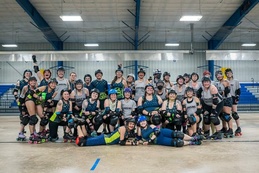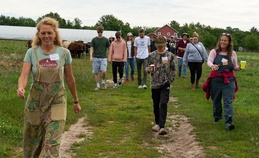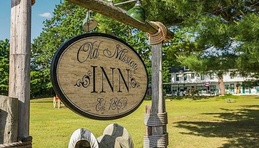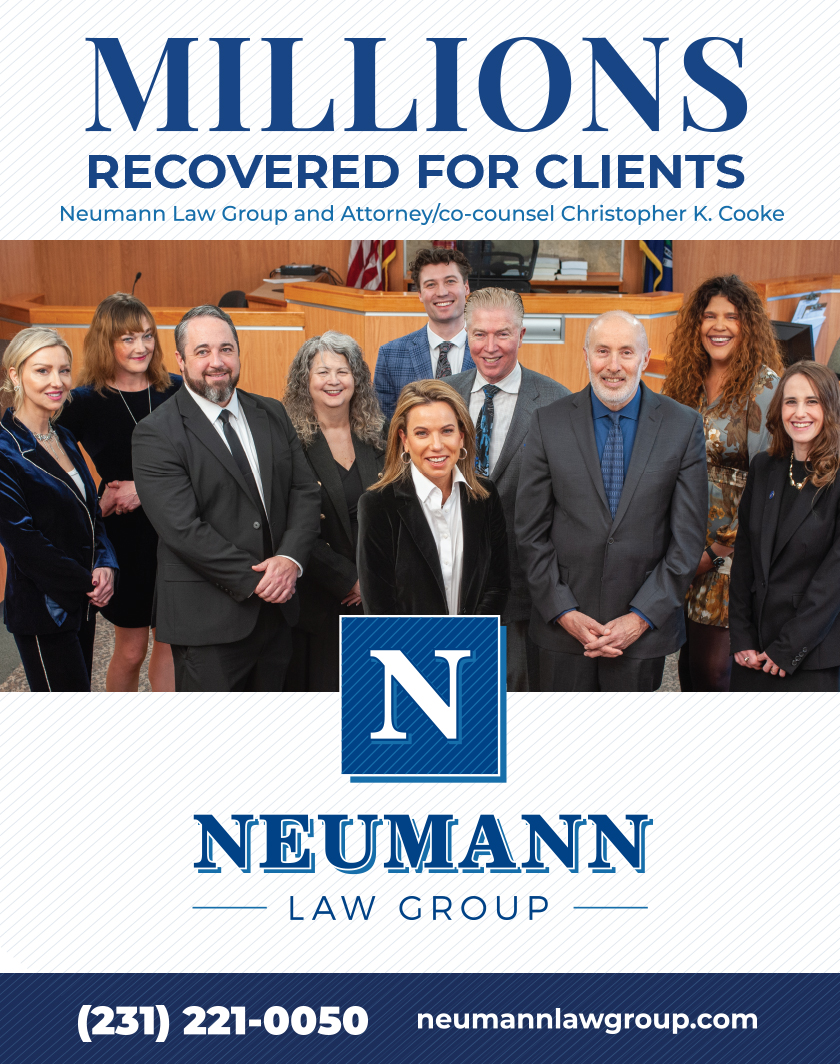Bob and Bob
June 28, 2006
Men aren’t exactly known for mushiness or soft words, especially when it comes to talking about friendship. So to hear Bob James and Bob Stehouwer chat about nurturing their friendship after Stehouwer’s stroke nine years ago, it was at once an inspiration and a surprise.In truth, the two Bobs admitted they had a more typical friendship for many years. They met 25 years ago at the Traverse City Country Club, and golfed together whenever James could break away from touring. Bob James is the Bob James, a jazz pianist and winner of two Grammies. Stehouwer, who studied social science at Michigan State University, ran E&J Plumbing Supply, his family’s business in Traverse City. (He sold the business after his stroke).
The Bobs liked each other, their wives liked each other, and their daughters also really liked each other. Anyone who struggles with trying to match all these different likes, knows how extremely rare that is. Conversation for the men usually revolved around golf and the next trip their families had planned together.
All that changed, though, after
Stehouwer was crippled by a severe stroke. Bob and Bob talk here how they salvaged and then fused their friendship through making art together. They met up in Stehouwer’s elegant living room, which was beautifully decorated with some of his art pieces on the wall.
NE: First tell me about your stroke.
Bob S.: It was really bad. I was in the hospital for a month, in critical care for several days. I couldn’t move any of my right side; I couldn’t talk or walk. The doctors thought I would be a fraction of myself. I had to go through many months of very intense physical therapy.
The roughest part in all this was seeing Kay, my wife, having to be responsible for all the details of our lives. I couldn’t help her at all. I believe a stroke is equally difficult for the spouse.
NE: Did you get depressed? I’ve seen stroke patients in nursing homes who just break down and cry throughout the day.
Bob S.: Not particularly, but I was very unhappy.
Bob J.: We were in New York when he had his stroke (it was March) and we wanted to be here, but Kay and Bob kind of insulated themselves in the house, and we wanted to respect that, but I was frustrated. I couldn’t talk to him because he couldn’t talk, and I wanted to do something for our friendship. So I began to send him music.
Bob S.: It was really great. He sent me a CD every week; it inspired me.
NE: Did you fear then that you’d lose him as your friend?
Bob J.: Yes, I was afraid of that. When I finally saw him again, I couldn’t understand him very well (paused, a little
choked up). I can still remember, I stuck my right hand out to him to shake hands and that was completely spastic. I felt awkward.
I didn’t know what to say.
We had to reinvent our dialogue with each other. I knew he didn’t want me to feel sorry for him. Our former dialogue was about golf and that wasn’t appropriate.
He was struggling to speak, to walk.
So, it started with the music, that’s how we first started connecting again.
Bob S.: You were over at our house one night for dinner and you asked me, “Have you ever tried sketching?” I’d never been approached to sketch or to draw something. So Bob asked, “Why don’t you try it?” It sounded like a good idea to me and with as much traveling as Bob does, he was willing to take the time. He’d spend two or three hours with my computer and he’d show me how to do different things.
Bob J.: The computer was the key – to give our friendship something we could do together. I thought the computer sketching tablet would be a great way to accommodate what he could do.
He was intrigued and was very surprised as to how interesting art became for him. He was impressed with the right brain, left brain concept, how the damage from the stroke opened up a side of his brain that was not as active as before.
His reaction to colors was very different than mine. He’s very, very color sensitive, and comes up with unusual color choices, and he attributes that to opening a different part of his brain. You can’t put your
finger on it exactly - nothing factual, but pretty obvious.
But at the very beginning, he just used the computer voice recognition software
to help get his speech back. He would
say a word, and if he’d get it right the
computer would flash it back to him.
He didn’t use it for very long, but it got
him started and he was really learning the computer from ground zero.
Bob S.: I had used computers in my business as a tool, for inventory control, but never for art.
Bob J.: I remember you were struggling with the concept and I was thinking how your brain is similar to a muscle and needs to be exercised. The computer, for you, was like an exercise machine. It was very therapeutic.
Bob S.: The really neat thing was that Bob never treated me at any time as a person who had a stroke. It was just a matter of fact thing. He never used the stroke as an excuse. He never uses anything for an excuse. For him, it’s always, “What else is there to do?” He really was a mentor for me.
Bob J.: That’s true, but I learned so much more from him. Watching him learn how to talk and walk again, dealing with adversity. He taught me how to be positive with one’s life and how you can learn from that if you’re privileged enough to be his friend.
NE: What kind of program do you use?
Bob J.: Adobe Photoshop, the bible of computer art and photography. We also use Painter and Deep Paint, which uses the analogy of conventional brush strokes. An awful lot of it is finding an image that’s powerful and exciting and manipulating it, creating variations on it. We deliberately tried to move away from the photographic realism of an image.
Bob S.: Digital art is different than conventional art. So I really don’t think of myself as an artist, but I like to express myself through art. For me, it’s been very instrumental in my recovery.
Bob J.: It’s very unusual to collaborate in the art world, not in the music world. I’ve always liked to collaborate with my music. But most visual artists are loners and don’t want anyone else tampering with their domain. Ours was a unique situation. Even though our tastes are different, we’ve had no problem finding a common meeting ground. We’ve gone to different art galleries and talked about different artists.
A few years into it, I was trying to get him to go public and he was very shy and didn’t think his work was worthy of going up on a wall. So we decided to collaborate, him thinking there’d be more interest in art by Bob James, than art by Bob Stehouwer. We went to Tapawingo and they ended up liking his art better!
Bob S.: We exhibited our first collaborative work, “Shelf Life” there; I did two panels and Bob did two panels. It’s the story of how our friendship evolved.
After Shelf Life, another two years went by and we wanted to do another exhibit. We had visited Montreal the week after the invasion of Iraq, March of 2003, and were staying in a hotel across the street where there had been a lot of demonstrations. We looked across the street, and there was a granite wall where someone had thrown huge red blobs of paint to demonstrate against the war.
To us, however, it looked like an exhibit of avant-garde art, and we both thought it would make an interesting experiment for a new collaboration. We thought, what kind of paint flows down like that. Bob came up with a name for it, urban flamingo.
Bob S.: We spent a whole summer, throwing paint at canvas in my garage.
Bob J.: We were laughing so hard while we were out there. And we ended up with a number of drip art images. I loved the process more than the art itself. We’d talk about what makes one paint drip better than another.
Bob J.: Some of the colors just worked better together, some were more dramatic. The one that turned out the best has now
become the cover of my new CD, Urban Flamingo – it’s black, red and white. I asked him if I could use his art and the title.
Bob S.: Here’s Bob James, who has won two Grammies and he asks if he can use my artwork. I think it’s wonderful.
Bob J.: We all need reinforcement and encouragement, especially in the art world that’s so subjective. The same thing can
be called crap by one person and genius by another .
Bob S.: If you wanted to buy Urban Flamingo, there are four copies at Best Buy.
Bob J.: He’s very good at promoting me.
NE: Urban Flamingo. The name is a little edgy. Is the music?
Bob J.: The music features a band of musicians almost all from Detroit, and I recorded most of it in Detroit .The tie-in is definitely there.
NE: You mentioned you were in Montreal. So are your families traveling together again?
Bob S.: Yes, and it’s not a problem. Weíll go some place for a few days and walk all over the place. They don’t even pay attention to my handicap, the way I walk. It’s a neat thing.
I still have some trouble expressing myself if the subject shifts quickly. I’m still trying to formulate a sentence in my mind and they’ve moved onto something else.
Bob J.: You want your stroke to be invisible; the last thing you want to be thought of is handicapped. He doesn’t have a handicap sticker on his car.
Bob S.: But it’s a really slow recovery rate. I can move my right hand a tiny bit. It’s a challenge, but everyone has challenges. That’s one way to look at it. But I’m better with my left hand than I ever was with my right hand.
NE: So what’s next?
Bob J.: We’ve just finished a collaboration we’ve been working on; we each did four individual pieces, then cut them in half, so that we have eight images going in two rows. By offsetting them we’re blurring who did what. I think it’s absolutely symbolic of how we are intermingling with each other further and further.
The perfect thing about art is its endless possibilities. With the drip art, we found we like the depth, the dimensionality of acrylic paint, and it provided a change from the limitations of giclée prints. Maybe in the future we’ll combine the computer and the dimensionality of the paint. An idea I’ve had is to take our images from the computer and then print it on canvas and paint over it, scan the image back into the computer, and then print it out and paint over it again, opening up many opportunities for back & forth collaboration.
Bob S.: Bob likes to think experimentally like that. He was just in Asia and he worked with Chinese students (at the Shanghai
Conservatory of Music), teaching them how to improvise. They are studying traditional, classical Chinese music and they did some live performances. It’s fantastic.
Bob J.: I was concerned if they’d be open to it. Although I was delighted to discover that they were very adept at improvising, they had never been exposed to jazz until I came along. What I was hoping for was a confrontation of things that don’t go together – things that shouldn’t work. But what I didn’t anticipate was what I’d learn from it.
NE: I can imagine what it was like to communicate with the students. When you and Bob were first starting out, it was probably also very difficult.
Bob S.: Bob and I had the ability to communicate even though I struggled with talking. It goes back, even when we played golf – we knew where the other guy was coming from.
Bob J.: In a way it was more pure communication. We couldn’t do it with words, so we did it with a purity of friendship. We know we needed to get back to where our friendship had been.
NE: Do you ever talk much about Bob’s stroke?
Bob J.: We talk about everything. A friendship like this usually doesn’t come along in one’s lifetime. It’s much stronger than it ever was. Both Bob and I had a chance to grow because it stopped being one-dimensional. Sports, in general, is always about that.
Bob S.: I always thought it would be terrible to have a stroke, and it is. But when you have a stroke, every day you can get a little bit better.
Other ailments are more out of your control. For instance, I believe in my mind that my hand will move someday if I keep working at it.
Bob J.: There’s power in it for you. The stroke did its damage and it was in control, and now you’re in control. After his stroke, we did go out to the golf course a few times because Bob wanted to coach me. But our favorite golf outing was when we went out on the Kingsley course to shoot some photographs. It was a very beautiful course. I noticed I made better shots, not golf shots, but camera shots, and I never had to look for my ball in the woods. I don’t play golf that much anymore, I don’t enjoy it as much as I did. A lot of things are like that. You just have a change in your priorities. You close one door and open another.
Editor’s Note: To see more of Bob James’ art, go to his website, bob james.com. To view the art of Bob Stehouwer, google Robert Austin Stehouwer Art; there’s also a link to his work via the Bob James Art Gallery.
Trending

Ready, Set, Jam with TC Roller Derby!
TC Roller Derby gears up for the Fresh Coast Frenzy Tournament, Aug. 15-17, at the Grand Traverse County Civic Center. Teams… Read More >>
Farmers Get Together at Northern Michigan Small Farm Conference
The Northern Michigan Small Farm Conference brings together farmers from across the region for two days of education, tours,… Read More >>
Old Mission Inn: Then & Now (and Now For Sale)
The Old Mission Inn has seen a lot in its years on the peninsula. Established in 1869, the inn has only had four owners over… Read More >>


